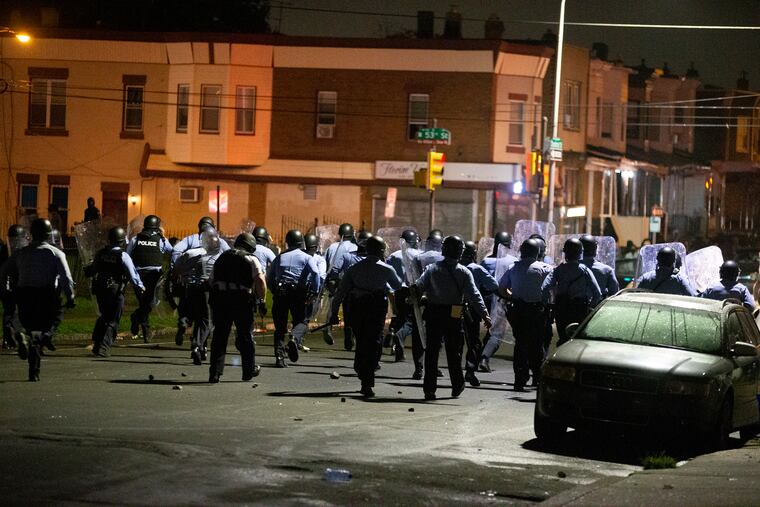Police killing of Walter Wallace Jr. shows Kenney administration learned little from summer protests | Editorial
In May, Commissioner Danielle Outlaw and Mayor Jim Kenney vowed a quick review of use of force and swift changes to policies. The killing of Walter Wallace Jr. shows that neither were sufficient.

In the days after police fatally shot Walter Wallace Jr. ten times, Mayor Jim Kenney and Police Commissioner Danielle Outlaw have offered little to suggest that they have learned or changed much since late May when protests broke out following the death of George Floyd at the hands of Minneapolis police.
Facing concerns about the way Philadelphia police handled the protests, they made claims about protesters being from out of town and said the tear gas on I-676 was in response to an assault on a state trooper. The former was never confirmed and the latter was disproven by dash camera footage — a fact both later apologized for.
» LATEST UPDATES: Find the most recent news on the fatal police shooting of Walter Wallace Jr. here.
On Wednesday, in a press conference about protest response, Kenney and Outlaw made similar claims. Kenney talked about anecdotal reports of "New Jersey and New York plates in places that were hit that were close to bridges.” Outlaw mentioned reports of Molotov cocktails and “something that appears to be blood intentionally thrown” on officers. None of this has been confirmed.
Outlaw also claimed she hadn’t heard about a video of a mob of cops shattering the windows of a car, dragging out and hitting the driver with batons, while a child was removed from the backseat — nor did she provide clear answers of what may have justified such action.
» READ MORE: Video surfaces showing Philadelphia police bashing SUV windows, then beating driver while child was in backseat
In May, Outlaw and Kenney vowed a quick review of use of force and swift changes to policies. The killing of Wallace shows that neither the review or the changes were sufficient. In addition, the incident shed light on a shortage of 2,000 Tasers in the department, despite a 2016 plan to equip all officers with Tasers, and the fact that, unlike other cities' police agencies, Philadelphia’s doesn’t have a behavioral health unit.
Outlaw has been in the police department for less than a year, but Kenney have overseen it for nearly five years. A 2015 Department of Justice study recommended to equip all patrol officers with Tasers. A 2016 Pennsylvania Commission on Crime and Delinquency study noted that in police incidents that involve a mental health crisis, mental health workers were “rarely on scene or contacted from the scene.”
Now that 10 bullets struck and killed a man in the midst of a mental health crisis, will any of these issues be addressed?
City Council has shown responsiveness to the city’s demand for change. Council held hearings on police response to the protest (Kenney did not testify) and passed multiple bills to reform policing, and placed two police reform charter amendments on the ballot. (They were supported by Kenney.)
» READ MORE: Vote yes on all four Philly ballot questions | Endorsement
Meanwhile, aside from hiring consultants to conduct months-long investigations into the city’s protest response, not much seems to be happening on the administration side.
None of this excuses the unacceptable violence against police officers, or vandalism and theft from stores, that harms local business owners in commercial corridors. But while the outlet of the anger might be misguided, the anger itself is not.
At this moment, leadership means taking responsibility for the state of policing in our city. Philadelphians deserve to know: who controls the Philadelphia Police Department? And who will make it better?